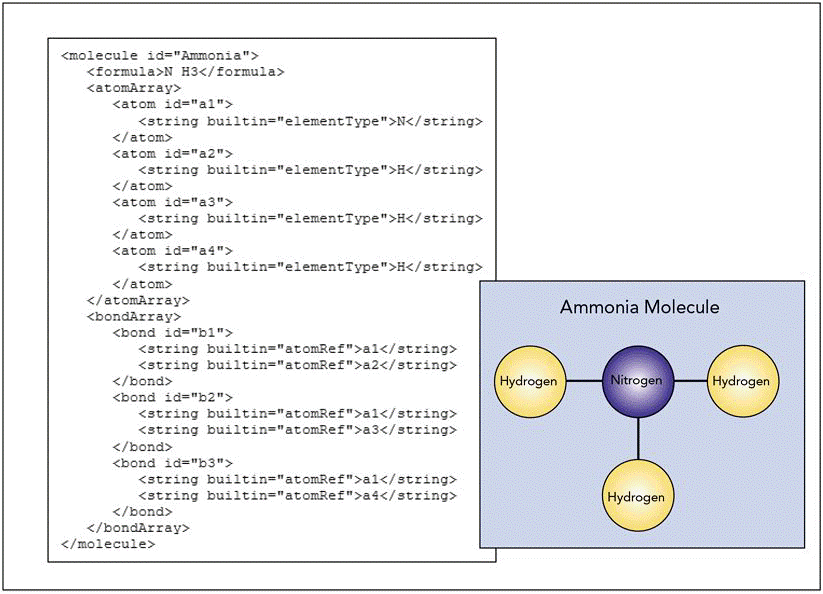A) ISO-8859-1
B) UTF-8
C) Latin-1
D) DTD 2.0
Correct Answer

verified
Correct Answer
verified
True/False
XML is a markup language that can be extended and modified to match the needs of the author and the data content.
Correct Answer

verified
Correct Answer
verified
Multiple Choice
Make sure to end every entity reference with a(n) _____.
A) period
B) comma
C) apostrophe
D) semicolon
Correct Answer

verified
Correct Answer
verified
Multiple Choice
An attribute value always must be enclosed within either single or double _____.
A) brackets
B) quotes
C) braces
D) parentheses
Correct Answer

verified
Correct Answer
verified
Multiple Choice
For different users to share a vocabulary effectively, _____ must be developed that specifically control what code and content a document from that vocabulary might contain.
A) guidelines
B) rules
C) goals
D) objectives
Correct Answer

verified
Correct Answer
verified
Short Answer
Empty element tags are entered using a(n) _____ tag.
Correct Answer

verified
one-sided
Correct Answer
verified
Multiple Choice
Assume that the home page of Helen's company, Hair Unlimited Salon, has the web address _____. This address provides customers with a unique location to access all of Hair Unlimited Salon's online products.
A) xml://example.com/hus
B) http://example.com/hus
C) ftp://example.com/hus
D) http://example.hus/com
Correct Answer

verified
Correct Answer
verified
Multiple Choice
An RSS file is written in _____.
A) SGML
B) HTML
C) XML
D) AML
Correct Answer

verified
C
Correct Answer
verified
Short Answer
_____ can be thought of as a lightweight version of SGML.
Correct Answer

verified
Correct Answer
verified
True/False
The name in an element's closing tag must match the name in the opening tag.
Correct Answer

verified
Correct Answer
verified
Multiple Choice
Case 1-1 Ryan is new to the use of XML, so he has a lot of basic questions about the fundamentals, including some philosophical questions about the language. -Ryan has heard that an XML document must be well-formed. Which of the following is NOT a characteristic of a well-formed document?
A) It contains no syntax errors.
B) It has a prolog, body, and epilog.
C) It includes an XML declaration.
D) It satisfies the rules of its DTD or schema.
Correct Answer

verified
Correct Answer
verified
Multiple Choice
 The accompanying figure shows a molecule described using a(n) _____ vocabulary.
The accompanying figure shows a molecule described using a(n) _____ vocabulary.
A) XML
B) CDF
C) MML
D) OFX
Correct Answer

verified
Correct Answer
verified
True/False
A DTD defines the structure of the data and, very broadly, the types of data allowable.
Correct Answer

verified
True
Correct Answer
verified
Multiple Choice
Element names may not contain _____.
A) letters
B) the string "XML"
C) blank spaces
D) the underscore character
Correct Answer

verified
Correct Answer
verified
Multiple Choice
Case 1-2 Clarisa is tracing through her XML code to find syntax errors. -Clarisa begins by looking for incorrect element names. Which of the following is a problematic element name?
A) _recipe
B) street address
C) NAME
D) Item
Correct Answer

verified
Correct Answer
verified
Multiple Choice
Case 1-2 Clarisa is tracing through her XML code to find syntax errors. -Finally, Clarisa double-checks all of the entity references used in the document. Which of the following is NOT one of the entity references that XML supports?
A) &
B) &attr;
C) >
D) "
Correct Answer

verified
Correct Answer
verified
Multiple Choice
Case 1-1 Ryan is new to the use of XML, so he has a lot of basic questions about the fundamentals, including some philosophical questions about the language. -Ryan asks how the rules for a given XML vocabulary are specified, and you explain that it is done using either a document type definition (DTD) or schema. Which of the following is NOT a true statement about DTDs and schemas?
A) Both DTDs and schemas contain rules for how data in a document vocabulary should be structured.
B) A DTD defines the structure of the data and, very broadly, the types of data allowable.
C) A schema more precisely defines the structure of the data and specific data restrictions.
D) DTDs and schemas are required, but they are seldom helpful in ensuring that your XML documents follow a specific vocabulary.
Correct Answer

verified
Correct Answer
verified
Short Answer
An element contained within another element is said to be _____.
Correct Answer

verified
Correct Answer
verified
True/False
The string ' is a(n) character reference for the apostrophe.
Correct Answer

verified
Correct Answer
verified
True/False
Documents written in SGML must be used on devices running the Unix operating system.
Correct Answer

verified
Correct Answer
verified
Showing 1 - 20 of 91
Related Exams